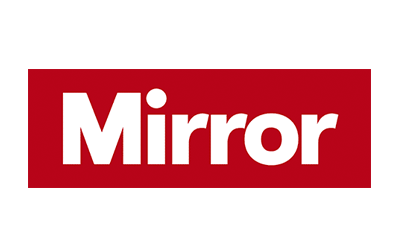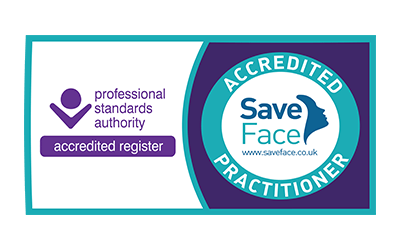Dermal fillers can help to restore our skin and facial contours to a more youthful appearance or enhance/ plump particular areas to achieve a more aesthetically pleasing appearance. They are one of the most popular non-surgical treatments we offer at Karidis Clinic; here are the answers to some of the most common dermal filler questions. If you’d like any more information, call 02037 335839 to speak to one of the team or arrange a consultation.
Quick Links
Dermal Filler FAQs
The main ingredient of the injections used in our clinics includes a form of hyaluronic acid. These treatments are probably the simplest and most commonly performed around the world. Hyaluronic acid type fillers are available in many guises through a multitude of companies. There are some variations between them in terms of longevity due to changes in a part of the molecular structure of each, however this is usually slight. Furthermore there is variation in terms of likelihood of allergies or reactions. The most common types of injectable fillers we use are usually Juvederm, Voluma, Restylane, Perlane, Restylane touch, Sub-Q, Vital, Belotero etc. Depending on your particular problem and circumstance we will advice what type of filler would be appropriate for you.
Juvederm is currently the most common type of injectable we use in our clinic. Juvederm is a family of injectable gels composed of non-animal stabilised Hyaluronic acid. Various Juvederm type products such as Ultra, Plus and Voluma differ in their consistency and are used in different circumstances. They mainly consists of complex sugar chains, which have been stabilised for longer lasting effect in the skin. It is biodegradable and is non permanent. The manufacturing process of Juvederm products is similar to the production of insulin or antibiotics. When combined with the body’s own Hyaluronic acid, it creates volume for the treatment of lips, as well as other lines or wrinkles. It basically acts by restoring your skin’s volume, creating softness and revitalizing your appearance.It contains no animal ingredients and therefore no skin test is needed.
Hyaluronic acid fillers (or HA fillers) have been in use in various guises for over 20 years. Millions of injections have been administered and are thus the benchmark for clinical excellence in their field. Their safety and efficacy are clinically proven and supported by robust clinical data, spanning 20 years. Research and development on these fillers is however continuous.
Injectable fillers can instantly soften telltale aging lines or improve your looks by enhancing your natural features, such as your cheeks or lips. They also restore volume, improve skin elasticity, and smooth niggling lines and imperfections.
Injectable fillers are usually a crystal-clear gel produced biotechnologically using stabilized, non-animal hyaluronic acid and water. The hyaluronic acid is a tissue-friendly substance closely resembling the hyaluronic acid that occurs naturally in skin and the body. By replenishing nature’s supply of hyaluronic acid, these revitalize and plump up the skin, instantly diminishing the appearance of lines and giving a softer look.
The filler is injected into the skin in small amounts using a very fine needle. The gel provides hydration and structure and gives natural volume to smooth away the appearance of lines, enhance facial shape, or create fuller lips. The treatment is very quick and often takes less than 30 minutes. The treatment benefits can normally be seen instantly and they does not affect facial expression. No skin test is required because they do not contain any animal-derived ingredients.
Injectable fillers can be used virtually anywhere on the body, from smoothing out facial lines, create fuller lips and shape facial contours, as well as used in the cheeks and chin. It is a subtle approach to enhancing looks naturally. The most common areas treated are: from the nose to the angle of the mouth (the nasolabial folds) lips (enhancement) cheeks and chin (shaping) back of the hands, décolletage, face (skin rejuvenation) between the eyebrows (the glabellar lines).
This depends on how much and what type of product you will require. Of course once you have been examined and assessed during your pre-treatment consultation, we will be able to discuss the cost of the treatment with you.
One of the great advantages of the various hyaluronic acid fillers is that the effects are long lasting but not permanent. This is good because the face and body are not static either and change with time. It is usually not a good idea to inject a long acting or permanent filler into a part of the body or face that undergoes some change over time. Longevity of the products varies from individual to individual however as rough guidelines the following apply – Facial lines and facial shaping: follow-up treatment or top up is usually needed after approximately 6 months. However after 2 or 3 treatments have been administered, the time interval between injections can increase to 12 or 18 months as some collagen build up starts to occur which in itself fills the area. Lip enhancement: follow-up treatment is normally needed in about 6 months. Skin rejuvenation and deep hydration: after the initial intense treatment of 3 treatment sessions every 2 – 3 weeks, follow-up sessions are normally recommended around every 6 months. Duration depends on many factors, such as skin type, lifestyle, age, the degree of perfection demanded by the patient and the injection technique of the practitioner.
Most new filler products containing Hyaluronic Acid gels, now contain a mixture of a local anaesthetic. Therefore pain is considerably less than the previous generation of fillers. Of course some people may experience the treatment as a mild discomfort. A local anesthetic cream is often used on the surface of the skin to numb this. Another form of anesthesia, a dental block, can be used to further numb the area when enhancing sensitive areas such as the lips. However anaesthetic creams have advanced so much that a dental block is seldom needed.
Yes you can. However it is best advised to have filler once any obvious swelling from the facial surgery subsides. In general it is best done after 6-8 weeks from any surgery.
You can expect slight redness, swelling, pain, tenderness, itching and/or bruising following any injectable filler treatment. This is the same as you might expect with any type of injection. However, the discomfort is temporary and generally disappears after a few days. With lip enhancement, it is wise to choose your treatment time with care since your lips may become swollen and appear slightly uneven for a few days. If you wish you may apply light makeup over any treated area to disguise any ensuing bruising.
Like any medical treatment there is always the potential for risks and side effects. However as Hyaluronic acid type fillers have been used for over 25 years, they have shown to have an excellent safety track record. Nonetheless, some common injection-related reactions might occur after any injectable filler; these typically resolve spontaneously within one or two days after injection. These reactions include redness, swelling, pain, itching, bruising or tenderness at the injection site. Inflammatory reactions, infections, skin lumps (granulomas) or even skin loss may very rarely occur and require further treatment. Scarring although possible, is extremely rare. After a lip enhancement, your lips may be swollen for several days. If you have a history of cold sores, a preventive course of anti-viral medication will be administered to avoid a possible outbreak with the treatment.
Most people can benefit from filler treatment. Nonetheless they should not be used in or near skin sites where there are or have been active skin disease, inflammation or related conditions. Nor should it be injected into an area where a permanent implant has been placed. These products have not been tested in pregnant or breast-feeding women. Patients taking anticoagulants should also avoid treatment. During your pre-treatment consultation, your medical history and or medications will be discussed and you will be advised accordingly.
















